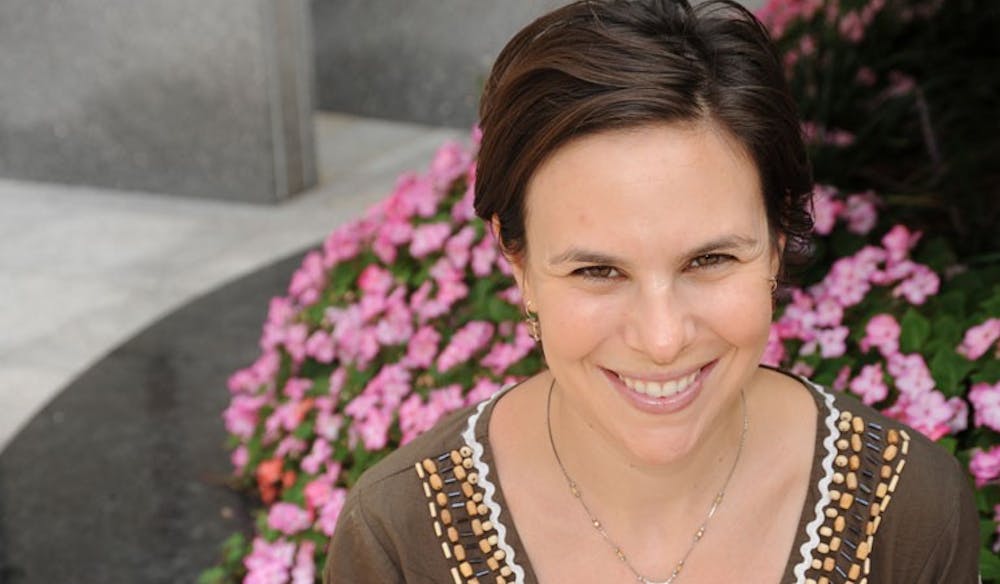Sharrona Pearl is a Communication professor who doesn’t have a cell phone — and the irony of that statement isn’t even part of her reasoning.
“A friend of mine has a cartoon on his fridge,” Pearl said. “It says, ‘At first I became a vegetarian for ethical reasons, and now I just do it to annoy people.'"
She compares this to her decision not to use a cell phone, but also said she just never bought one.
Pearl walks to and from work every day from Center City and savors the time that the walk without a phone gives her to think, away from the demands of work and the craziness of having three young children at home.
“I have this kind of enforced quiet time,” she said of her commute.
But Pearl is much more than a technological enigma.
For instance, classes like her current lecture “Freaks and Geeks” and her seminar for next semester, called “The Visual Construction of Race” explore culture and history through unique lenses, analyzing the place of the body in political and social conflicts and continuously shifting the paradigms through which her students think.
Her research, the topic of two books she’s published and a third one she’s working on, focuses around the face, which she says she's obsessed with. The book she most recently wrote, “Face On” — a play on the expression “face off” — is about face transplants.
“[A face transplant] completely vexes this index of one to one — one face to one person,” Pearl said. “What if you have the face of another person? Does that change your behavior? Can we no longer trust faces as identificatory?”
Although her writing focused on a new procedure, Pearl said history played a significant role in the book.
“These are actually very old fears and concerns,” she said. “There are all these more abstract concerns about what this means to the nature of identification and humanity and what we think the status of the face is.”
Pearl's modern work is a deviation from her academic origins — she studied History of Science at Harvard. She also did a semester at “the other Cambridge” in England, which is, as she put it, the only way you can “out-Harvard Harvard.”
“I’ve always been more a cultural historian and a theorist of the body than a science historian,” she said, adding that “a lot of communications and a lot of science studies merge together, especially as things are becoming more digitized and technology is playing this really important role in media.”
Especially with the publishing of her book about faces, she said she sees herself as much more firmly situated in the field of communications, and that the transition hasn’t been without its challenges.
“Since being here, I’ve really had to educate myself a lot in certain ways,” she said. “Every field has its own language. Even if they read the same things, they read them differently. So there was a whole language I had to learn, but I think I’m pretty fluent now. Maybe I’m bilingual.”
Her next book, “Changing Faces,” currently in its early stages, focuses on the use of facial prosthesis in film. She said she especially wants to focus one chapter on the concept of “playing ugly.”
“Women in particular, but actors in general, manipulate their appearance to be taken more seriously,” she said. “That chapter is going to be a lot less about beauty than I thought it was and more about estrangement. Actors have to somehow be different from their celebrity personas in order to be taken seriously in certain contexts.”
As for the future of her research, Pearl said she’s planning to move away from faces after this next book. Instead, she wants to look at religious practices that occur over the internet, specifically how religious embodiment can or cannot be translated online.
“It’s thinking about the importance of actually physically being in the same place as opposed to being in the same place virtually and how that plays out in religious ritual,” she said.
The Daily Pennsylvanian is an independent, student-run newspaper. Please consider making a donation to support the coverage that shapes the University. Your generosity ensures a future of strong journalism at Penn.
DonatePlease note All comments are eligible for publication in The Daily Pennsylvanian.






